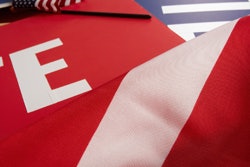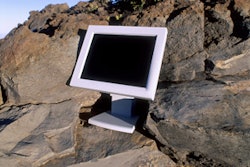By Andrew K. Reese
In the event of a global disaster, it's likely that the only two species still stalking the face of the planet will be cockroaches and paper checks. Paper has proved remarkably resilient in the B2B payments space, with checks constituting something like 70 percent of the 11 B2B transactions that took place in the United States in 2007, according to Celent, an industry research group. Corporate purchasing cards, or p-cards, meanwhile, continue to make up just a single-digit fraction of total B2B payments.
This trend looks set to change, according to Jim Lister, vice president of e-commerce solutions with First Data Corporation, which provides information and transaction processing services for credit card issuers. Lister says that new developments in the commercial card industry are making it more attractive for both buying organizations and suppliers to shift more of their B2B payments to a p-card environment. But before that can happen, buyers will have to learn to think about their corporate card differently than the personal credit card in their wallet.
Next-gen Corporate Cards
In a white paper that he authored last year, Lister noted that companies have primarily used purchasing cards for categories such as travel, entertainment, office supplies and other "small-ticket" items. "Corporate purchase cards have rarely been used as a payment mechanism for line-of-business or supply chain expenses. Organizations have also been slow to adopt the cards for higher-spend purchases," he wrote.
Lister believes, however, that this will change thanks to the introduction of new processing systems, such as the MasterCard Payment Gateway (MPG), rolled out in 2007. The MPG system allows for buyer-initiated payments to suppliers, versus the traditional supplier-initiated transactions. Security is heightened because the buyer's purchase card number and the supplier's banking details remain with the MPG network, and neither the buyer nor the vendor gains access to each others' information. And the system allows for integration into enterprise resource planning and e-procurement systems, allowing for "touchless" payments processing.
The potential benefits for buyers and suppliers from expanding the use of corporate cards could be significant. The National Association of Purchasing Card Professionals estimate, for example, that p-cards can save anywhere from 55 percent to 90 percent of the cost of a payment transaction versus traditional paper. P-cards also can expose granular transaction data, allowing for greater control over spending, and they potentially could help buyers negotiate lower prices with suppliers thanks to lower bank fees and transactional costs incurred by suppliers.
The Chargeback Challenge
But before p-cards can assume a larger role in B2B payments, buying organizations and the card companies themselves will have to address the risks associated with chargebacks. Chargebacks remain common on the consumer credit card side, and the rules on chargebacks have largely carried over from the consumer to the business side. But in the B2B world, suppliers view the risk of a buyer initiating a chargeback on a large-ticket invoice as too great and therefore have been reluctant to move toward p-card payments for transactions over a certain limit.
Lister offers the example of a company that has been working with a consulting firm and paying the consultants every month on a purchasing card. "Then, for some reason, the relationship goes sour and the company could charge back the last six months. If the consultant couldn't pay, that would put the onus on the acquiring bank to cover those chargebacks."
MasterCard took steps to try to mitigate this risk for suppliers by limiting the valid chargeback reasons, at least initially, for its MPG system. Other options for limiting suppliers' exposure could include, for example, narrowing the window during which buyers can initiate a chargeback. But Lister says that, ultimately, the real solution to the chargeback challenge may lie with buying organizations.
"Buyers are going to have to play by the same rules as apply for checks or ACH," Lister says. "If a check was processed and an issue came up, they would pick up the phone and get it addressed with the supplier, maybe with a credit on their next invoice. They really need to just continue doing business as they have been doing until now."
Lister believes that these two sides can come together in a way that allows greater numbers of large-ticket purchases to be made through corporate cards, and that this inevitably will drive greater purchasing volume away from checks and towards the p-card. In fact, he optimistically predicts that purchasing cards could account for as much as one-quarter of B2B transactions in the next three to five years and even start stealing market share from ACH. The key, again will be the buy side. "Buying organizations have to understand what's driving the suppliers, then look at their own model and make sure that the two meet," he says.



















